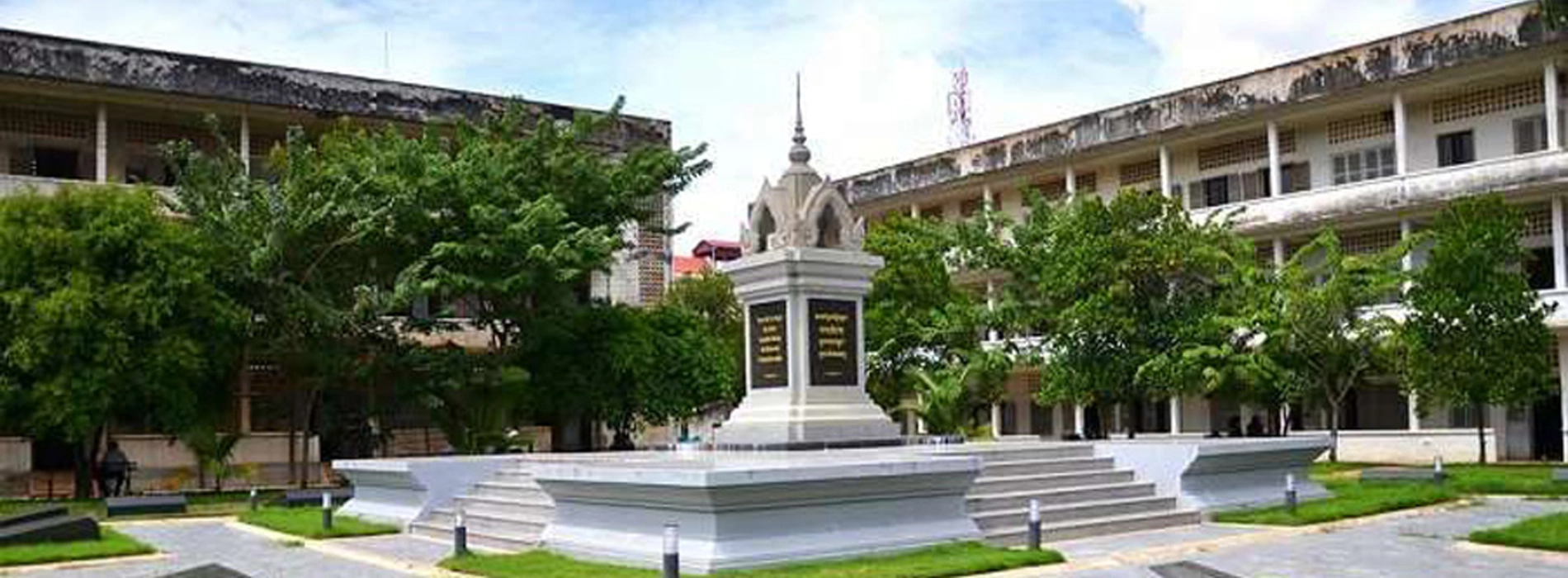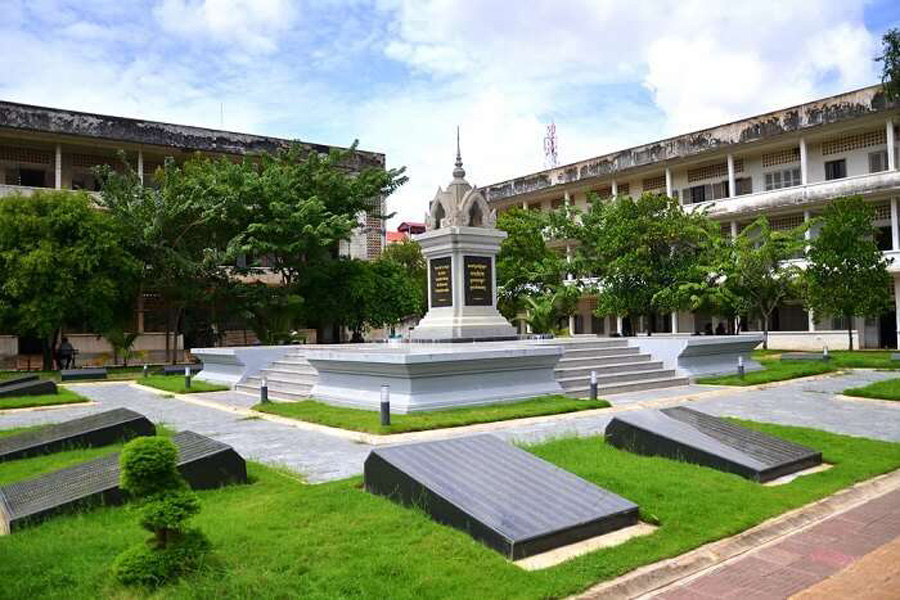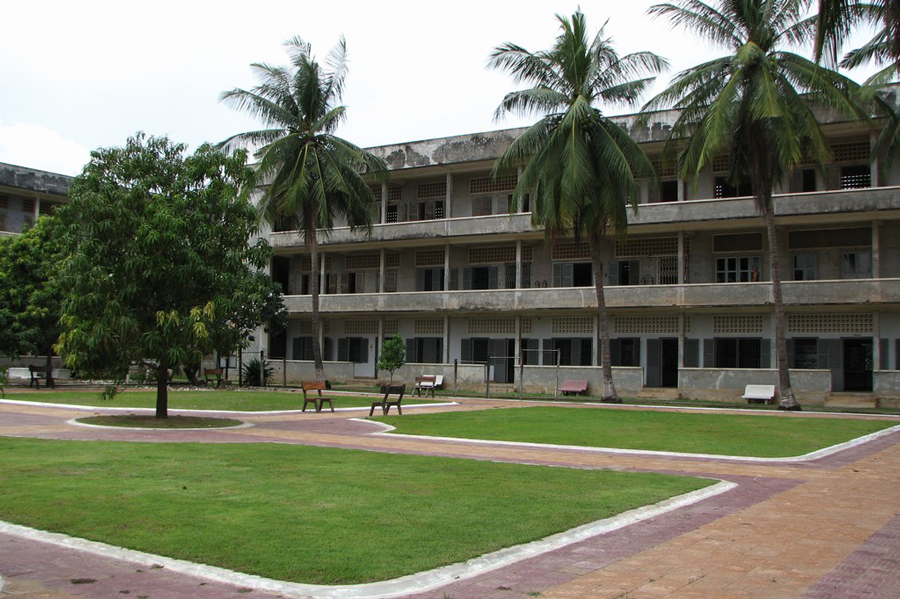Tuol Sleng Genocide Museum

The Tuol Sleng Genocide Museum, also known as S-21, stands as a haunting testament to the atrocities committed during the Khmer Rouge regime in Cambodia. Originally a high school, Tuol Svay Prey High School, the site was transformed into Security Prison 21 (S-21) by the Khmer Rouge leadership, notably Pol Pot, from 1975 to 1979. S-21 became a symbol of the regime's brutality, where thousands of Cambodians were detained, tortured, and executed.
 Photographs of prisoners at Tuol Sleng Genocide Museum
Photographs of prisoners at Tuol Sleng Genocide Museum
The museum, with its stark and somber exhibits, including photographs, artifacts, and preserved cells, serves as a poignant memorial to the victims of the Khmer Rouge era. The Tuol Sleng Genocide Museum plays a vital role in preserving the memory of the Cambodian genocide, ensuring that the world does not forget the suffering endured by those who perished within its walls and serving as a solemn reminder of the importance of preventing such atrocities in the future.
Nestled within the heart of Phnom Penh, the Tuol Sleng Genocide Museum, formerly Tuol Svay Prey High School, encapsulates the chilling narrative of Cambodia's tumultuous history during the Khmer Rouge regime. The year 1975 marked a turning point when the Khmer Rouge, led by Pol Pot, seized control of the country, plunging it into an era of radical transformation. Tuol Svay Prey High School, once a hub of education, underwent a macabre metamorphosis into Security Prison 21 (S-21), a clandestine chamber of horrors. This high school turned prison became a symbol of the regime's brutal campaign to reshape Cambodia into an agrarian communist society.
 The Tuol Sleng Genocide Museum: A Memorial To The Victims Of The Khmer Rouge
The Tuol Sleng Genocide Museum: A Memorial To The Victims Of The Khmer Rouge
S-21's walls bore witness to the detainment and torment of thousands of individuals—intellectuals, professionals, and perceived enemies of the state—who faced unspeakable brutality within its confines. The prisoners, stripped of their humanity, endured agonizing interrogations and tortures in an atmosphere of fear and despair. The regime's radical pursuit of ideological purity manifested in widespread atrocities, leading to the loss of an estimated 1.7 to 2 million lives through execution, forced labor, and starvation.
As the Khmer Rouge regime collapsed in 1979, Vietnamese forces liberating Phnom Penh discovered the gruesome reality of S-21. Among the skeletal remains and haunting remnants, only a handful of survivors were found, bearing witness to the unfathomable suffering that unfolded within those walls. In the aftermath, the Vietnamese government converted the site into a museum in 1980, preserving the evidence of the atrocities as a historical testament.
.jpg) Tuol Sleng Genocide Museum
Tuol Sleng Genocide Museum
The Tuol Sleng Genocide Museum, with its chilling exhibits of photographs, artifacts, and meticulously preserved cells, serves as a powerful memorial. It stands as a repository of the collective memory of Cambodia's darkest chapter, urging visitors to confront the depth of human cruelty and the consequences of unchecked power. The museum plays a vital role in educating the world about the atrocities of the Khmer Rouge era, underscoring the importance of remembrance and vigilance to prevent the recurrence of such heinous acts. Within its solemn walls, the echoes of the past resonate, compelling humanity to reckon with the profound lessons embedded in the scars of history.
You mau also like: Unveiling Cambodia's Timeless Treasures: 10 Destinations Not to Be Missed
The Tuol Sleng Genocide Museum, being an indoor museum, can be visited throughout the year. However, it's essential to consider Cambodia's climate and weather conditions when planning your visit. The country has a tropical climate with distinct wet and dry seasons:
 Tuol Sleng Genocide Museum campus
Tuol Sleng Genocide Museum campus
1. Dry Season (November to April): This is generally considered the best time to visit Cambodia, including the Tuol Sleng Genocide Museum. The weather is drier, and temperatures are more moderate during these months. November to February is especially popular as the temperatures are cooler, making it more comfortable for outdoor activities.
2. Wet Season (May to October): The wet season brings heavy rainfall and higher humidity. While the museum is indoors, the weather might affect other aspects of your trip, such as transportation and outdoor exploration. May to October is considered the low tourist season, so you might encounter fewer crowds, but be prepared for occasional heavy rain.
It's also worth noting that Cambodia has a peak tourist season, typically during the cooler months from November to February. During this time, popular tourist sites, including the Tuol Sleng Genocide Museum, may experience higher visitor numbers.
The ticket prices for the Tuol Sleng Genocide Museum in Phnom Penh, Cambodia, were as follows:
To reach the Tuol Sleng Genocide Museum in Phnom Penh, Cambodia, visitors have various transportation options. Taxis and tuk-tuks, readily available throughout the city, offer convenient rides directly to the museum. Negotiating fares beforehand, especially when using tuk-tuks, is advisable. Alternatively, the public bus system in Phnom Penh may have routes passing near the museum, and travelers can explore this budget-friendly option. For those staying nearby or feeling adventurous, walking or cycling could provide a leisurely journey to the museum. Additionally, ride-sharing apps like Grab operate in Phnom Penh, offering a modern and reliable means of transportation. Guided tours are also popular, with many tour operators offering comprehensive packages that include visits to Tuol Sleng Genocide Museum and other historical sites, providing visitors with valuable insights. Regardless of the mode of transportation chosen, it's essential to check opening hours, carry small denominations for potential fees, and respect local customs throughout the journey and during the museum visit.
You may also like: Top 5 Interesting Experiences at Tonle Sap Lake